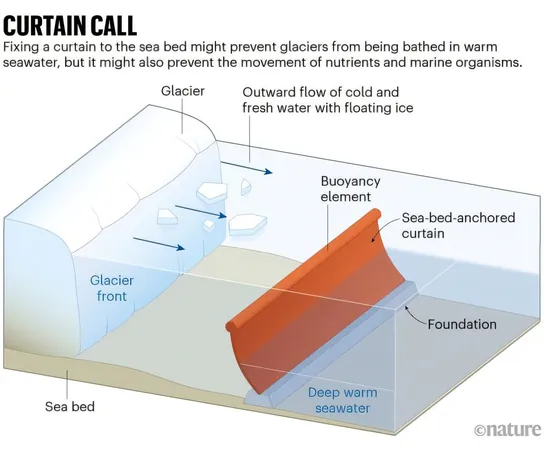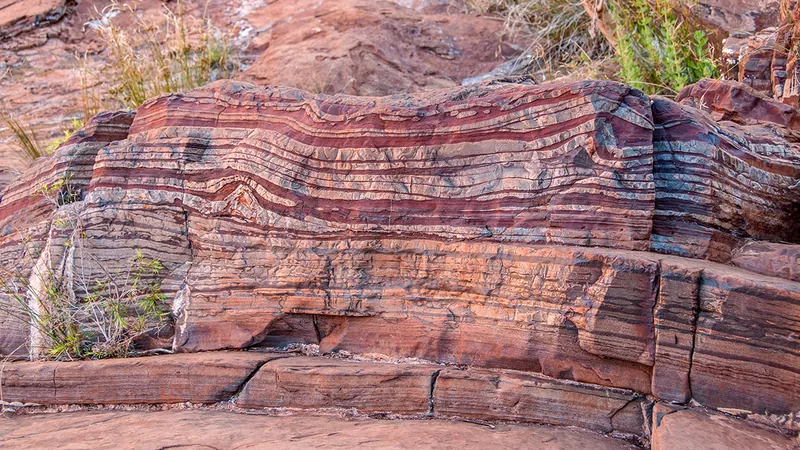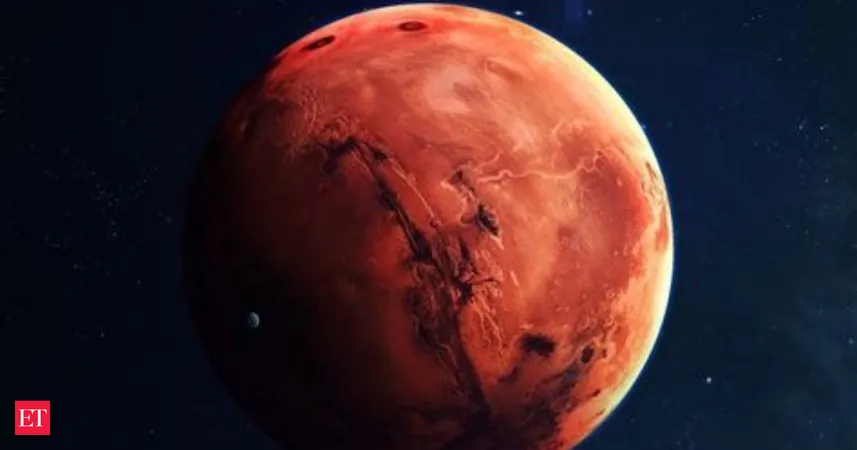
“Doomsday Glacier” Melting at Alarming Rates – Is Geoengineering Our Last Hope?
2024-11-03
Author: Amelia
Recent studies reveal that the Thwaites Glacier, popularly dubbed the “Doomsday Glacier,” is melting faster than scientists initially anticipated, igniting a heated debate over potential geoengineering solutions. This massive glacier holds significant sway over global sea levels, and its retreat poses catastrophic risks for coastal cities worldwide.
Understanding the Thwaites Glacier
The Thwaites Glacier is a colossal ice mass located in West Antarctica, roughly the size of Florida. It serves as a critical barrier, preventing warmer ocean waters from entering the basin it occupies, which resides below sea level. If the glacier were to collapse, it could trigger a catastrophic rise in global sea levels by nearly 11 feet, directly threatening numerous coastal metropolitan areas and small island nations.
Currently, the Thwaites Glacier is responsible for 4% of annual sea-level rise, shedding about 50 billion tons of ice each year. Scientists fear that we might be approaching a tipping point—a scenario where warming leads to irreversible changes in the climate system, potentially hastening the melting of the entire West Antarctic Ice Sheet.
The Latest Research Insights
The study from UC Irvine and Waterloo utilized high-resolution satellite imagery and hydrological data to pinpoint the areas experiencing rapid melting due to warm submerged currents. Christine Dow, a glaciologist and co-author of the study, expressed concern over the accelerating timeline of melting, stating, “We were hoping it would take a hundred, 500 years to lose that ice. A big concern right now is if it happens much faster than that.”
Conversely, the research from Dartmouth and Edinburgh suggests that certain vulnerabilities previously associated with the melting glacier may be overstated. Their findings challenge the common belief in marine ice cliff instability, suggesting that as the glacier thins, it could stabilize rather than collapse.
Geoengineering: A Controversial Solution?
Given the alarming rate of the glacier’s retreat, the idea of geoengineering—using technology to manipulate environmental variables to mitigate effects of climate change—is gaining traction. Scientists affiliated with the Climate Systems Engineering Initiative at the University of Chicago are pushing for greater investment and research into geoengineering strategies designed to slow glacier melt.
John Moore, a professor associated with the initiative, highlighted the urgency of immediate action. “It will take 15 to 30 years for us to understand enough to recommend or rule out any interventions,” he elaborated, emphasizing the need for proactive measures to avert disaster.
Proposals for geoengineering are innovative yet radical; they include the concept of creating massive submarine curtains that could deflect warm water away from the glacier or utilizing bubbles to insulate vulnerable areas of ice. Such interventions may serve as temporary measures while society works toward reducing greenhouse gas emissions.
A Call for Caution
Despite the potential of geoengineering, many experts caution against relying too heavily on these interventions. Gernot Wagner, a climate economist, pointed out that while such practices could provide relief, they are not substitutes for fundamental emission reductions. “Geoengineering doesn’t solve anything; at best, it’s a painkiller,” he remarked, stressing the importance of addressing the core issues contributing to climate change.
The Thwaites Glacier's future remains uncertain, and as we inch closer to potentially devastating climate thresholds, the dialogue surrounding geoengineering could redefine our approach to environmental stewardship. While innovation may provide tools for mitigation, the true path to sustainability lies in our commitment to reducing carbon emissions and preserving the planet for future generations.









 Brasil (PT)
Brasil (PT)
 Canada (EN)
Canada (EN)
 Chile (ES)
Chile (ES)
 España (ES)
España (ES)
 France (FR)
France (FR)
 Hong Kong (EN)
Hong Kong (EN)
 Italia (IT)
Italia (IT)
 日本 (JA)
日本 (JA)
 Magyarország (HU)
Magyarország (HU)
 Norge (NO)
Norge (NO)
 Polska (PL)
Polska (PL)
 Schweiz (DE)
Schweiz (DE)
 Singapore (EN)
Singapore (EN)
 Sverige (SV)
Sverige (SV)
 Suomi (FI)
Suomi (FI)
 Türkiye (TR)
Türkiye (TR)